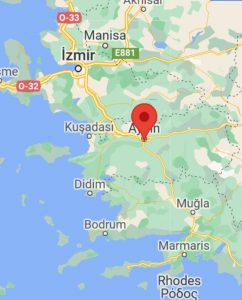Leonardo´s Relatives Live Still Today
Renaissance
Leonardo´s relatives live still today
Genetics opens new ways for genealogy
by Linda Grünberg | 09/15/2021
Do you actually know who your ancestors were in the Renaissance Age? You may be an ancestor or relative of kings and artists and you don’t know. Thanks to genetics, that could soon be changed.
 So far, genealogy has been more likely a job for historians in dusty archives, but now new genealogists are appearing on the stage of science in ultra-pure laboratories: human geneticists.
So far, genealogy has been more likely a job for historians in dusty archives, but now new genealogists are appearing on the stage of science in ultra-pure laboratories: human geneticists.
In the case of Leonardo da Vinci, they also had to improve and expand a few things and there are 14 relatives still living today – not descendants, because Leonardo had no children what is best known – none of them are universal geniuses, but quite “normal” people .
Curiously, it should be noted that although Leonardo’s reproductive rate is reduced to zero, his genetor, on the other hand, had produced another 22 half-brothers into the world in addition to him.
Already interested to get more? Then just read next to the article on Eurekaalert, which is linked here. And for those who want to know exactly, there is also the scientific article by the researchers in the journal “Human Evolution”, which has almost 80 pages.
Vezzosi, Alessandro / Agnese Sabato: The New Genealogical Tree of the Da Vinci Family for Leonardo’s DNA. Ancestors and descendants in direct male line down to the present XXI generation , in: Human Evolution 36 (2021), S. 1-90
http://www.pontecorboli.com/digital/OpenAccess/2021_12_Vezzosi-Sabato_The-New-Genealogical-Tree-of-the-Da-Vinci-Family-for-Leonardos-DNA.pdf
The family tree is now longer (21 generations vs. 19 in 2016), broader (5 branches vs. 1), larger (14 living male direct descendants vs. 2), far more detailed…
Follow Lupa Romana by RSS ![]()
Cleopatra´s Dog Bone?
Newsflash
Cleopatra´s Dog-Bone?

Follow Lupa Romana by RSS ![]()
In Hadrian´s footsteps
Archaeology
In Hadrian´s footsteps
Excavation of Hadrian´s head and other part of an imperial statue
by Andrea Schütze | 09/13/2021
 Though there were also other Roman emperors travelling through the empire, none is associated with travel as much as the adoptive emperor Hadrian.
Though there were also other Roman emperors travelling through the empire, none is associated with travel as much as the adoptive emperor Hadrian.
Not different from our days when the President or Chancellor comes, the residents of a place felt very honored by the presence of the highest and most powerful man in the state or empire.
Inscriptions and statues provided memoria – a reminder of this event, which was extremely important for the people in antiquity.
It was the same in the early 2nd century when Emperor Hadrian stopped there on his inspection trips in today’s Aydin.
In his honor, a statue and probably an inscription was created in the aftermath of this visit. The statue – or rather parts of it – have now been excavated under the direction of Professor Ali Yalçın. This also includes a well-preserved head of the emperor. More findings are still exspected.
It is worth mentioning that the parts of the statue were not found in one place, but in different places.
After the excavations are complete, all artifacts will be exhibited in the Archaeological Museum of Aydin.
More information can be found in the article in the Hürriyet Daily News …

Follow Lupa Romana by RSS ![]()
Two news about the Hittites
Newsflash
Two News about the Hittites
Hattusha and a Temple of the Hittites


Follow Lupa Romana by RSS ![]()
Bernini for over 2 millions
Newsflash
Bernini for over 2 millions

Follow Lupa Romana by RSS ![]()